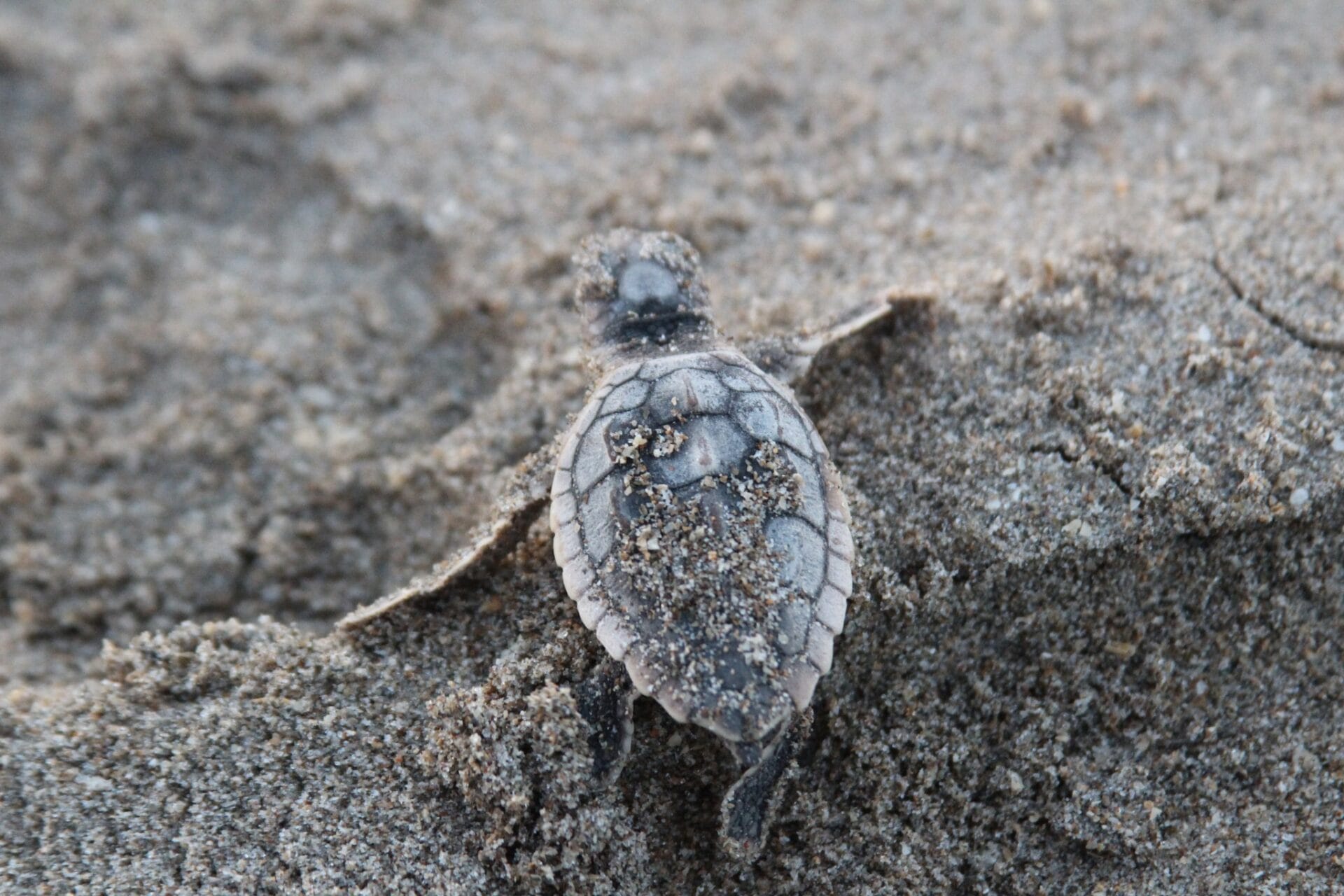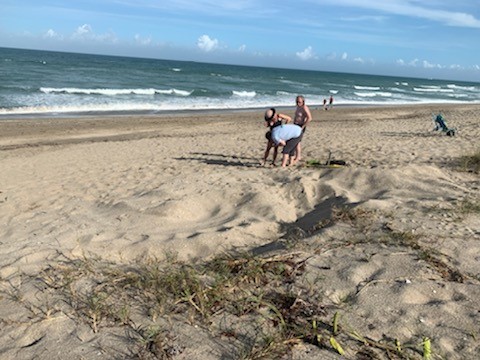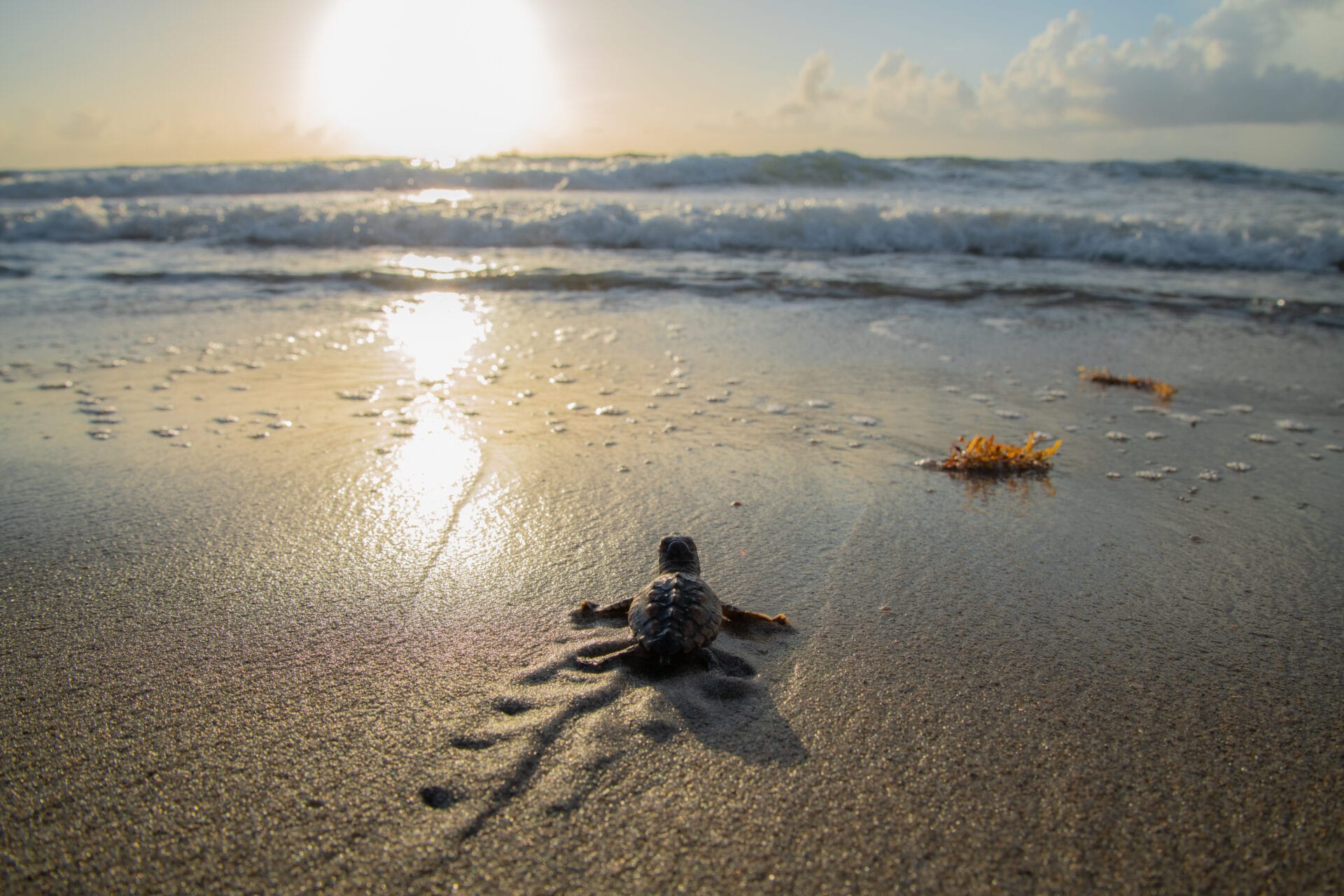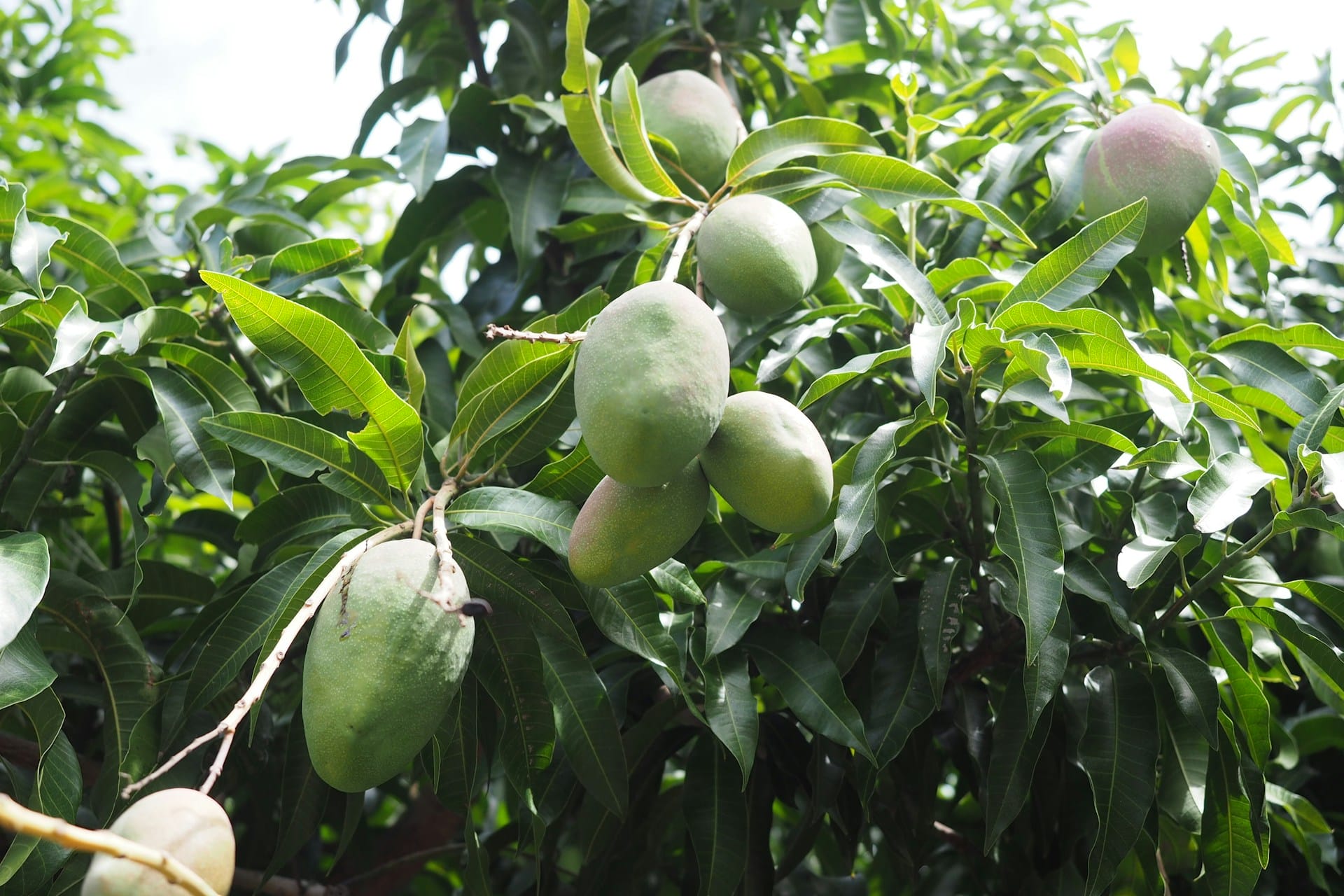The Treasure Coast beaches are an essential habitat for multiple turtle species. Turtle nesting season on Florida’s Treasure Coast is an exciting time for scientists who study endangered and threatened sea turtles. It’s also fun for locals and visitors who enjoy the area’s wildlife and are interested in helping with conservation efforts to save the sea turtles. Below is more information on turtle nesting season on Florida’s Treasure Coast and how you can best support and enjoy it.

When Does Turtle Nesting Season Begin?
Turtle nesting season starts on March 1st and runs until the end of October in Martin County and Indian River County. In St. Lucie County, the nesting seasons run slightly longer until November 15th. Each year, Martin County witnesses thousands of sea turtle nests along its shores. In 2023, the county saw nearly 13,000 sea turtle nests along its coastline. The Treasure Coast experienced a record-breaking turtle nesting season, and scientists hope the uptick in nests will continue.
Turtles Species that Nest on the Treasure Coast
Three turtle species, including the Loggerhead, Leatherback, and Green turtles, have made the Treasure Coast their home. The Loggerhead turtle is the most common sea turtle species. It grows to 3.5 feet long and can weigh up to 350 pounds. The Loggerhead is easily identifiable by its heart-shaped shell.
The Green sea turtle is around the same size as a Loggerhead and has a brown, grey, or green colored shell with a yellow to white underside. These turtles feed on sea grasses, giving their flesh a green tint. The Leatherback is the largest species, can grow up to six feet long, and weighs over a thousand pounds.
When the turtles come to the Treasure Coast, they find a spot on the beach and dig a hole with their hind flippers. The hole is usually one or two feet deep. The turtle then fills her nest and covers it with sand before returning to the ocean. This process is relatively short and happens in under an hour. The eggs themselves are about the size of tennis balls.

Where to Find Turtle Nests on the Treasure Coast
The Treasure Coast shoreline has many spots where sea turtles have decided to nest. For example, Jensen Beach on Hutchinson Island is one of the most important nesting areas for sea turtles. Biologists, park staff, and volunteers are usually busy at numerous nesting sites along the Treasure Coast. One major nesting site is the John D. MacArthur Beach State Park.
Many people who want to learn more about the nesting process sign up for a Turtle Walk on the Treasure Coast through Inwater Research Group. A turtle walk gives participants the chance to view a sea turtle’s nesting process while also learning about conservation. The Turtle Walk also has a Nest Excavation Program, which includes a beach walk and the opportunity to see hatchlings. During the program, participants join biologists on the beach as they learn about the nesting season. The Turtle Walk and Nest Excavation Program requires registration and a change of $10 per ticket, which can be secured through Inwater Research Group. The 2025 Turtle Walk program starts May 1st.
View this post on Instagram
Other places where people can experience turtle nesting on the Treasure Coast include Coastal Connections in Vero Beach, Florida. Coastal Connections specializes in turtle digs, turtle walks, and turtle rescue. They enjoy helping the public learn about sea turtles and provide many turtle-related opportunities and events throughout the year.
The Friends of Sebastian Inlet State Park also offer turtle walks. People can sign up for ranger-led walks, which are conducted on Wednesday through Friday night each year in June and July. The walks offer the possibility of witnessing turtle nesting in action. The walk usually takes place in a group of up to twenty people, and a $15 donation must be paid in advance to secure a spot with the group.
Local Public Sea Turtle Walks
Ecological Associates, Inc (EAI)
Jensen Beach
(772) 334-3729
Environmental Studies Center
Jensen Beach
(772) 219-1887
Florida Oceanographic Society
Stuart
(772) 225-0505
Florida Power/Inwater Research Group
Stuart
Coastal Connections
Vero Beach
(772) 226-0133
Friends of the Carr Refuge
Barrier Island Center
Vero Beach
(321) 723-3556
Sebastian Inlet State Park
Sebastian Fishing Museum
Vero Beach
(772) 338-2750
Disney Beach Resort
Vero Beach
Vero Beach
407-WDW-TOUR
Hobe Sound Nature Center
Hobe Sound
(772) 546-2067
John D. MacArthur Beach State Park
North Palm Beach
(561) 624-6950
Loggerhead Marinelife Center
Juno Beach
(561) 627-8280
How to Help Sea Turtles on the Treasure Coast
The Treasure Coast is serious about its conservation efforts regarding sea turtles. Martin, St. Lucie, and Indian River County have asked residents and tourists to adopt a turtle-friendly lifestyle so that the amazing creatures can thrive in the area. People should keep a few things in mind when helping the sea turtle and hatchling population.
First, if you see a turtle nest, don’t disturb it. It might be tempting to get a closer look and touch the nest, but it’s better not to disturb the nest in any way to increase the chances of the survival of the hatchlings. Next, avoid light at night around nesting areas. Flash photography can endanger sea turtles. Avoid using flashes on cameras while on the beach, and if you live on the beach or have a hotel room on the beach, turn off all patio lights and close blinds and curtains to keep indoor light from shining on the beach. The turtles are extremely sensitive to light; even a little light can disturb the nesting process.

Leatherback sea turtle nest.
Keep the beach as flat as possible. Local officials encourage residents and tourists to enjoy the beaches fully, which can include building sandcastles, digging holes, and bringing beach chairs or umbrellas for relaxation. However, returning the beach to its previous state after use is essential. Sandcastles should be knocked down, furniture removed, and holes filled before leaving the beach. It’s important that the turtles don’t have any obstacles that keep them from getting back to the ocean. If their path is obstructed, it can create confusion.
Finally, call Florida Fish and Wildlife if you see a sick, injured, entangled, or dead turtle. The department has an alert hotline for reporting issues that could harm turtles: 1-888-404-3922. The Treasure Coast does an incredible job of protecting the sea turtle population, but Florida state and federal laws also help the endangered species. So far, conservation efforts on the Treasure Coast have been quite successful, as indicated by the large number of nests that have been continuously growing over the years.
Indian River Habitat Conservation Plan
Indian River has a plan that tracks the number of nests reported for each season. Several groups, such as Sebastian Inlet State Park, Archie Carr National Wildlife Refuge, and Indian River County, help collect field data. In addition to tracking nests and determining the outcome of hatchlings, the conservation plan also helps with education and outreach programs so that locals are informed about how to protect turtle species. The conservation plan educates the public through newspaper and online articles, beach signs, presentations, and a children’s program called the Traveling Turtle Trunk Program. The program was designed to teach students about turtle conservation. The program also monitors human activities that endanger sea turtles, such as unauthorized beach fires, deep holes, vehicles on the beach, and illegal construction projects.

Sea Turtles are Important Globally, Not Just on the Treasure Coast
Turtles are more critical than most people realize. They help maintain a functioning ecosystem and are essential to seagrass beds and coral reefs that are home to many other valuable species. Sea turtles are a “keystone species” and influence the wildlife and sealife around them.
For example, hawkbill sea turtles help reefs by eating sponges. An overabundance of sponges decreases the biodiversity on the reef, which is essential for its health. Additionally, turtle nesting also helps beaches by leaving nutrients behind that are essential sources of coastal vegetation. Vegetation such as beach grasses stabilizes dunes and helps with beach erosion.

Sea turtles are also prey for many vital species; without them, other wildlife would become endangered. They are also the Uber and Lyft of the sea. They undergo long migrations, and many small animals and aquatic wildlife attach to the backs of turtles and hitch a ride, so they are critical in transporting different species.
Treasure Coast officials understand how important turtles are and have made many efforts to increase their population. Although sea turtles are currently endangered, the population will increase through continued conservation efforts. Martin, St. Lucie, and Indian River County encourage residents to live a turtle-friendly lifestyle during the nesting season.





